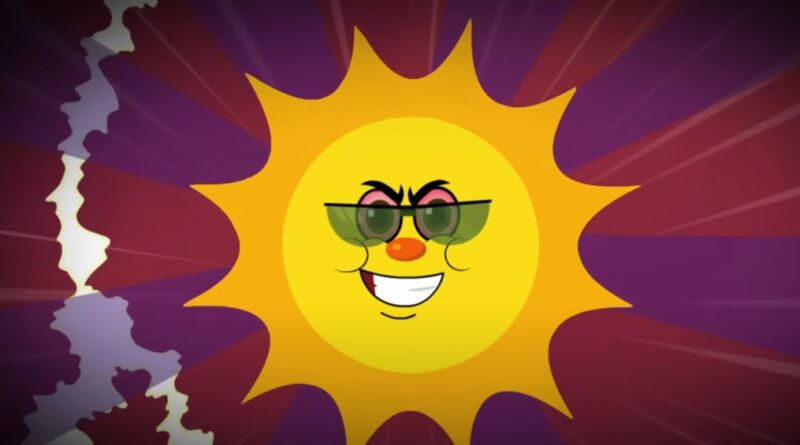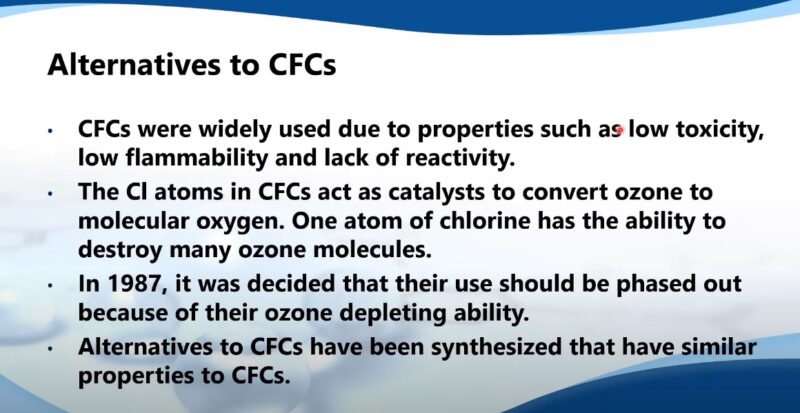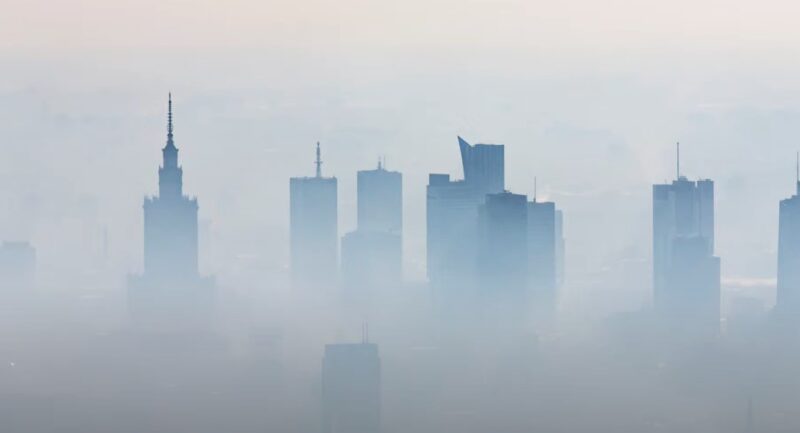Pollution is a pervasive issue that affects every corner of our planet, from the deepest oceans to the highest mountains, and even the air we breathe. Understanding the different types of pollution is crucial as it helps us identify the sources of these pollutants, their impacts, and how we can mitigate their effects.
In this article, we will focus on two specific pollutants: Chlorofluorocarbons (CFCs) and smog. These pollutants, while distinct, both fall under the category of air pollution, a type of pollution that has significant impacts on both our environment and our health.
These are particularly noteworthy due to their widespread presence and the severity of their impacts. Despite both being air pollutants, they are quite different in their nature and effects. In the following sections, we will explore these pollutants in detail, examining their sources, their impacts, and what we can do to mitigate their effects.
Air Pollution
Air pollution is the presence of substances in the atmosphere that are harmful to the health of humans and other living beings, or cause damage to the climate or to materials. There are many different types of air pollutants, such as particulate matter (PM), nitrogen oxides (NOx), sulfur dioxide (SO2), and volatile organic compounds (VOCs).
However, two of the most significant and concerning air pollutants are CFCs and smog. CFCs and smog are both prevalent in our atmosphere and have significant impacts on both human health and the environment. CFCs, while less directly visible than smog, have a profound effect on the Earth’s ozone layer, leading to its depletion.
Smog, on the other hand, is a visible form of air pollution that often appears as a thick fog. It significantly affects air quality, particularly in urban and industrial areas, and has numerous health effects. By targeting these pollutants, we can make significant strides in improving air quality and protecting our environment.
CFCs (Chlorofluorocarbons)
Chlorofluorocarbons, or CFCs, are types of compounds that were widely used during the 20th century in various applications, such as air conditioning systems, refrigeration, aerosol propellants, and in the manufacturing of foam products.
They are stable, non-toxic, and non-flammable, which made them seemingly ideal for these uses. However, their stability is also what makes them environmentally harmful: they do not break down in the lower atmosphere after they are released.
CFCs are released into the atmosphere through leaks, servicing, and disposal of equipment that contains these compounds. Once in the atmosphere, they can take up to 15 years to reach the stratosphere, where they are broken down by solar radiation and release chlorine atoms.
These atoms then participate in reactions that lead to the depletion of the ozone layer. The impact of CFCs on the ozone layer is significant. The ozone layer acts as Earth’s sunscreen, absorbing the majority of the Sun’s harmful ultraviolet radiation.
Without this protective layer, this radiation can reach the Earth’s surface and cause a variety of environmental and health problems.
Ozone Depletion
The ozone layer is a region of the Earth’s stratosphere that contains a high concentration of ozone (O3) molecules. It plays a crucial role in protecting life on Earth by absorbing the majority of the Sun’s harmful ultraviolet-B (UV-B) radiation.
Without the ozone layer, we would be exposed to high levels of UV radiation, which can cause skin cancer and cataracts in humans and harm animals, particularly those living in or near water. CFCs contribute to ozone depletion through a series of chemical reactions.
When CFCs reach the stratosphere, they are broken down by solar radiation, releasing chlorine atoms. These atoms can then catalyze a reaction that breaks down ozone molecules, reducing the concentration of ozone in the stratosphere.
Smog
Smog is a type of air pollution that reduces visibility and has serious health impacts. The term “smog” was first used in the early 20th century to describe the mixture of smoke and fog that often blanketed cities as a result of burning coal.
Today, the term is used to describe a similar, but slightly different, phenomenon: the combination of various pollutants in the air, often accentuated by particular weather patterns. Smog is primarily caused by the emission of pollutants from vehicles, factories, power plants, and other industrial sources.
These pollutants react in the presence of sunlight to form a mixture of harmful substances, including ground-level ozone, which is a key component of smog.
Photochemical Smog
Photochemical smog, often simply referred to as “smog,” is a type of air pollution that forms when sunlight reacts with nitrogen oxides and volatile organic compounds in the atmosphere. These chemicals are often emitted by cars, power plants, and industrial processes, making urban areas particularly prone to smog.
The role of sunlight in the formation of photochemical smog is crucial. The chemical reactions that lead to the formation of smog are initiated by sunlight, which breaks down nitrogen oxides into separate nitrogen and oxygen atoms.
These atoms can then react with oxygen in the air to form ozone, a key component of smog. Certain geographic areas are more prone to photochemical smog due to their climate and weather patterns. Cities with lots of sunshine and stable weather conditions are particularly susceptible.
This includes many cities in California, such as Los Angeles and San Diego, which are often shrouded in smog.
Health Impacts
The health impacts of exposure to pollutants like Chlorofluorocarbons (CFCs) and smog are far-reaching and can significantly affect the quality of life for many individuals. These impacts primarily target the respiratory and cardiovascular systems, but their effects can also extend to other areas of health, including the skin and eyes.
CFCs, while not directly harmful to human health, contribute to a phenomenon that has significant health implications: the depletion of the ozone layer. When CFCs cause the thinning of this protective layer, more UV-B radiation can reach the Earth’s surface.
This increased exposure to UV-B radiation can lead to a higher risk of skin cancers, including melanoma, basal cell carcinoma, and squamous cell carcinoma. Additionally, UV-B radiation is also associated with the development of cataracts, a condition that clouds the lens of the eye and can lead to vision loss over time.
Smog has direct and immediate health impacts. The mixture of pollutants that make up smog, including ground-level ozone, particulate matter, and various harmful gasses, can irritate the respiratory system.
This can lead to or exacerbate conditions such as asthma and bronchitis, causing symptoms like coughing, chest tightness, shortness of breath, and irritation of the throat and eyes. Furthermore, the fine particles in smog can penetrate deep into the lungs and enter the bloodstream, leading to cardiovascular problems such as heart attacks and arrhythmias.
Long-term exposure to smog can also lead to chronic obstructive pulmonary disease (COPD) and lung cancer, and has been linked to premature death. Certain populations are more vulnerable to the health effects of CFCs and smog.

Children, for instance, are at a higher risk because their lungs are still developing, and they tend to spend more time outdoors, increasing their exposure to these pollutants. The elderly and those with pre-existing health conditions, such as asthma or heart disease, are also more susceptible to the harmful effects of these pollutants.
Even healthy adults who work or exercise outdoors can experience health problems from prolonged exposure. Given the significant health impacts, it’s crucial that we take steps to reduce these pollutants.
This includes regulatory measures to control emissions, technological innovations to develop less harmful alternatives, and individual actions to reduce personal contributions to air pollution. Protecting the most vulnerable populations from these pollutants is not just a matter of public health, but also a matter of social justice and equity.
By working together, we can create a healthier environment for all.
Environmental Impact

CFCs and smog also have significant impacts on the environment. CFCs, through their role in ozone depletion, can harm aquatic ecosystems by allowing more UV-B radiation to penetrate the surface of bodies of water. This can affect the development of phytoplankton, which are at the base of many aquatic food chains.
Smog can also harm plant life, reducing growth and crop yields. It can also lead to the formation of acid rain when sulfur dioxide and nitrogen oxides, two components of smog, react with water, oxygen, and other substances in the air. Acid rain can harm forests and lakes, and can also damage buildings and other structures.
The effects of these pollutants on wildlife and biodiversity are also significant. By harming plants and aquatic ecosystems, they can disrupt food chains and lead to declines in wildlife populations. It’s clear that addressing these pollutants is not just a matter of human health, but also of environmental health.
Regulatory Measures
In response to the threats posed by these pollutants, various regulatory measures have been implemented at both the international and local levels. The Montreal Protocol, an international treaty designed to protect the ozone layer, has been particularly successful in reducing CFC emissions.
The treaty, which has been ratified by 197 countries, has led to a 98% decrease in the global production of ozone-depleting substances. Efforts to reduce smog have been more localized, often focusing on reducing emissions from vehicles and industrial sources.
These efforts have included implementing emission standards, promoting the use of cleaner fuels, and encouraging public transportation and carpooling. While these measures have had some success, challenges remain. Continued efforts are needed to further reduce these pollutants and their impacts.
Alternatives to CFCs

In response to the environmental harm caused by CFCs, various alternatives have been developed and promoted.
Hydrochlorofluorocarbons (HCFCs) and hydrofluorocarbons (HFCs) are two types of compounds that are often used as replacements.
These substances are much less damaging to the ozone layer, but they are still potent greenhouse gasses that can contribute to global warming. The environmental impact of these alternative substances is a subject of ongoing research.
While they are less harmful than CFCs in terms of ozone depletion, their contribution to global warming is a significant concern. It’s clear that while these alternatives are a step in the right direction, they are not a perfect solution.
Mitigation Strategies for Smog

There are various strategies for mitigating smog, many of which involve reducing emissions from vehicles and industrial sources. Urban planning can play a role in this, with strategies such as promoting public transportation, developing bike lanes, and implementing carpooling programs.
Emission standards for industries and vehicles can also help reduce smog. These standards limit the amount of pollutants that can be emitted, encouraging the development and use of cleaner technologies. Public awareness is also a crucial component of smog mitigation.
By understanding the sources and impacts of smog, individuals can take steps to reduce their own contributions to this form of pollution, such as by driving less and reducing their use of certain products.
FAQs:
How can individuals help combat pollution?
Individuals can help by using energy-efficient appliances, reducing personal vehicle use, supporting sustainable products, and advocating for pollution control policies.
Can these pollutants be completely eliminated?
While complete elimination may be challenging, significant progress can be made through continuous efforts to reduce emissions and adopt more sustainable practices.
How can technological advancements help mitigate these?
Technological advancements can contribute to pollution reduction by developing cleaner energy sources, improving emission control technologies, and promoting sustainable practices in various industries.
How long do CFCs persist in the atmosphere?
These pollutants have long atmospheric lifetimes and can persist for several decades, contributing to their detrimental effects on the ozone layer.
Can they affect weather patterns?
While CFCs do not directly impact weather patterns, the pollutants contributing to smog can affect local weather conditions and air quality.
Conclusion
It is crucial to understand the different types of pollution, including air pollution, so that we can protect our planet and our health. CFCs and smog, while distinct, are both significant contributors to air pollution, with far-reaching impacts on both human health and the environment.
Addressing these pollutants requires a combination of regulatory measures, technological innovations, and individual actions. By working together, we can reduce these pollutants and their impacts, protecting both our planet and ourselves.
The fight against pollution is a collective effort. Each of us has a role to play, whether it’s reducing our own emissions, advocating for cleaner technologies, or supporting policies that protect our air. Are you ready to take action? Let’s ensure a healthier, cleaner future for all of us, shall we?
